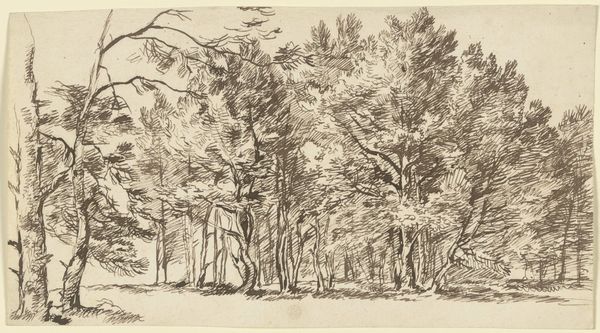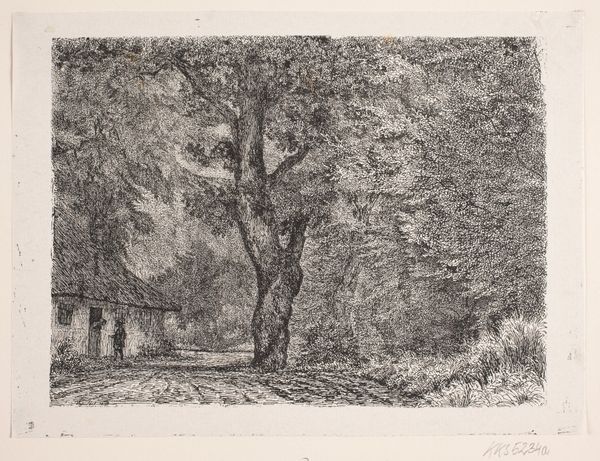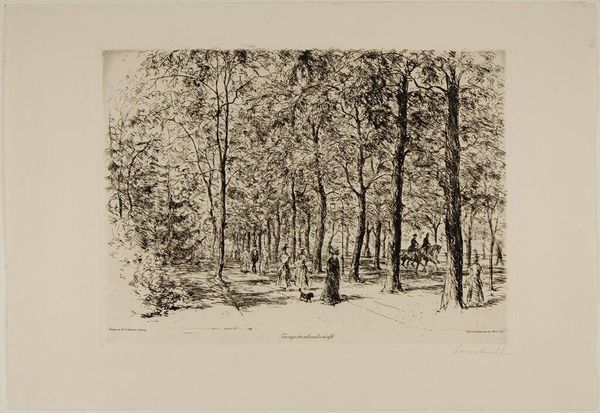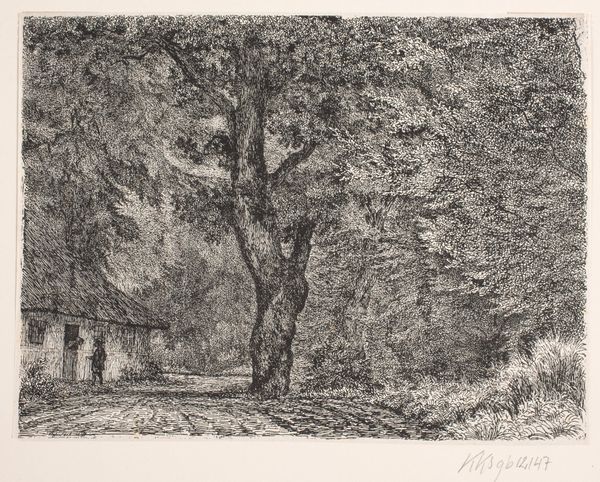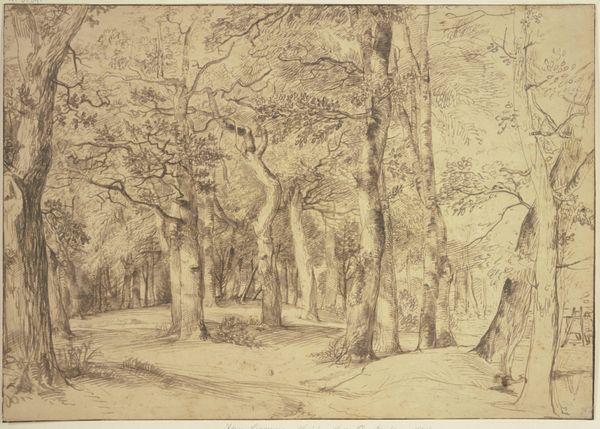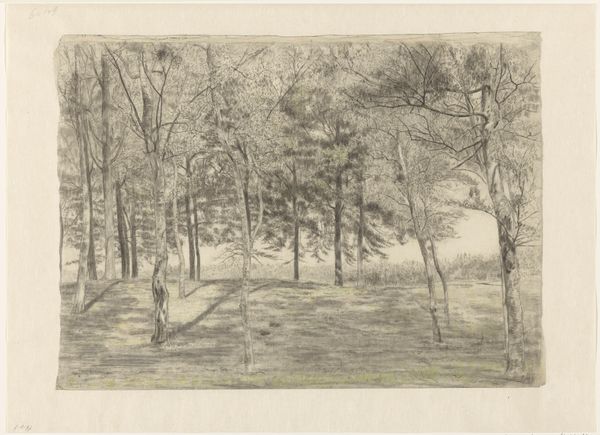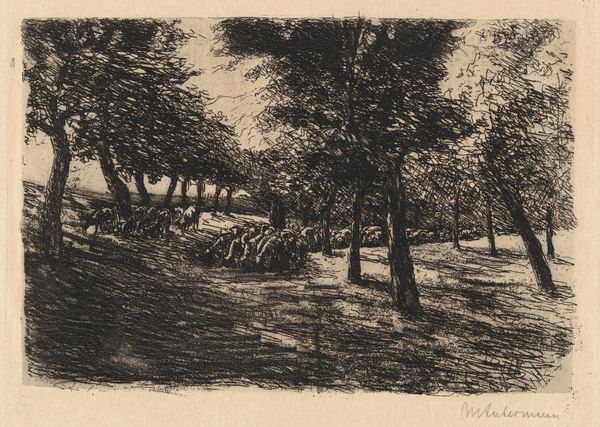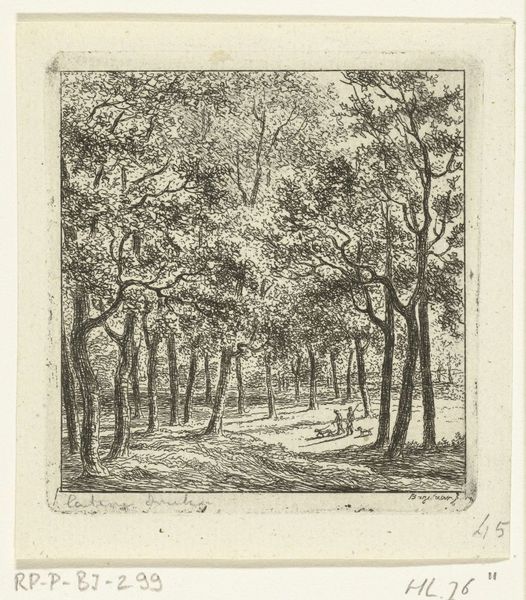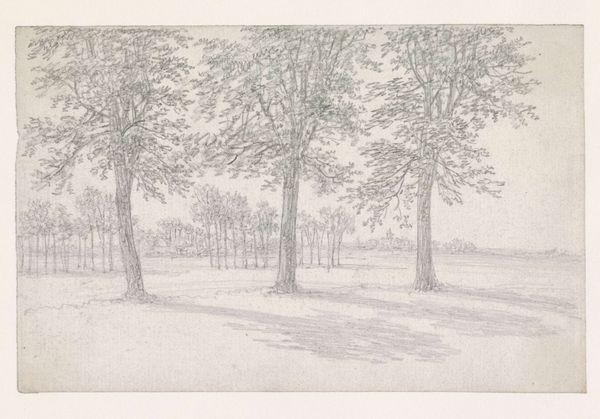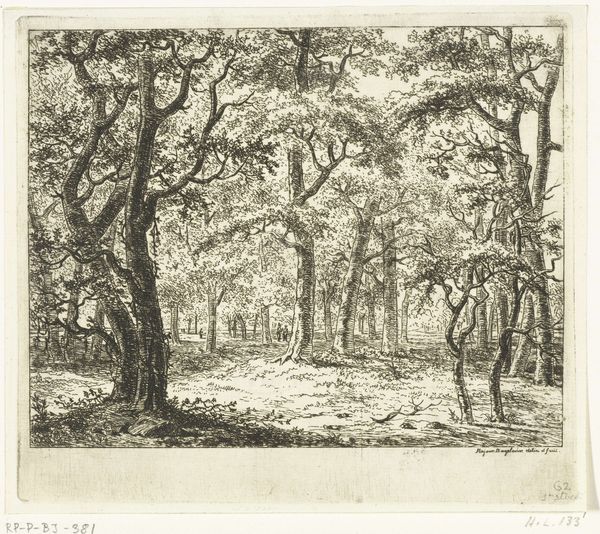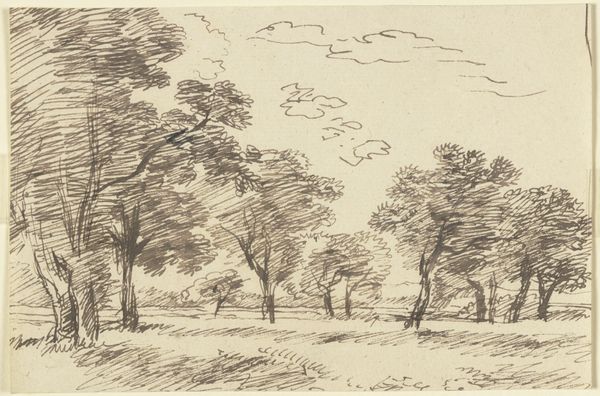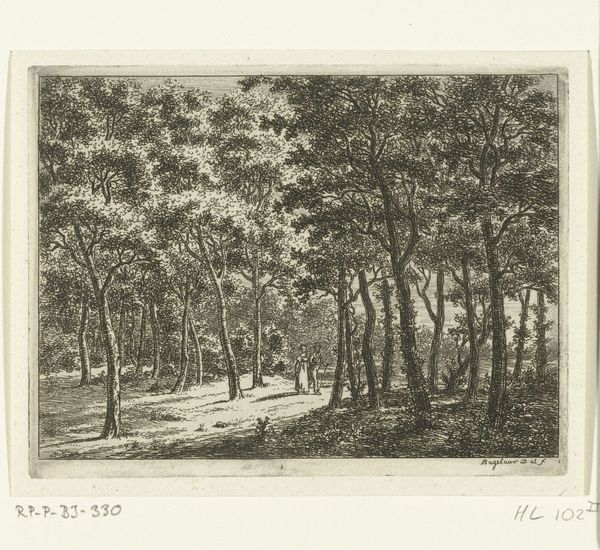
drawing, print, etching, woodcut, engraving
#
drawing
# print
#
etching
#
landscape
#
woodcut
#
engraving
#
realism
Dimensions: height 132 mm, width 188 mm
Copyright: Rijks Museum: Open Domain
Curator: Here we have Louis Charles Hora Siccama’s "Bos met sprokkelaarster", or "Forest with Gleaner" from 1875, currently residing here at the Rijksmuseum. It is an etching, with elements of engraving and woodcut evident as well. Editor: It's wonderfully textured. All that dense foliage! You can almost feel the cool, damp earth under your feet. I wonder, what sort of printing press would they have used? Were these techniques commonly taught, or was each artist forging their own path in printmaking? Curator: That feeling you describe certainly resonates with the Realist movement to which Siccama belonged. Realism championed depictions of everyday life and labour, such as the humble existence of this gleaner. The late 19th century witnessed significant artistic dialogue, where the established academies engaged with and were often disrupted by more avant-garde circles. Artists shared and appropriated different techniques. Editor: So this detailed, almost photographic representation of nature, produced by a clearly labourious, multi-step method using these traditional graphic art techniques, in its own way makes a powerful statement about class and labor. It's not just a pretty scene; it's about recognizing the role of the working class. Curator: Precisely. By depicting a common scene like a woman gathering wood, Siccama elevated a traditionally overlooked subject. And furthermore, prints had this very democratizing nature, that, for example, painting didn’t possess. Editor: You can see the wear and tear etched into those old tree trunks. What a fascinating snapshot of history, both artistically and socially! Thinking about the conditions and tools involved adds such another dimension to viewing the piece. Curator: Absolutely, and Siccama's work is a tangible reminder that art always operates within specific social and political conditions. The consumption of this image speaks volumes about how audiences in the late 19th century regarded both landscape and labor. Editor: It gives me a deeper respect for what goes into the seemingly simple act of living and creating.
Comments
No comments
Be the first to comment and join the conversation on the ultimate creative platform.
